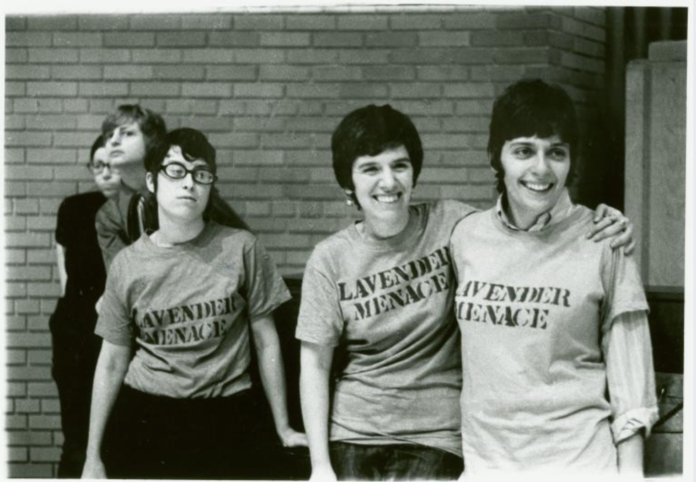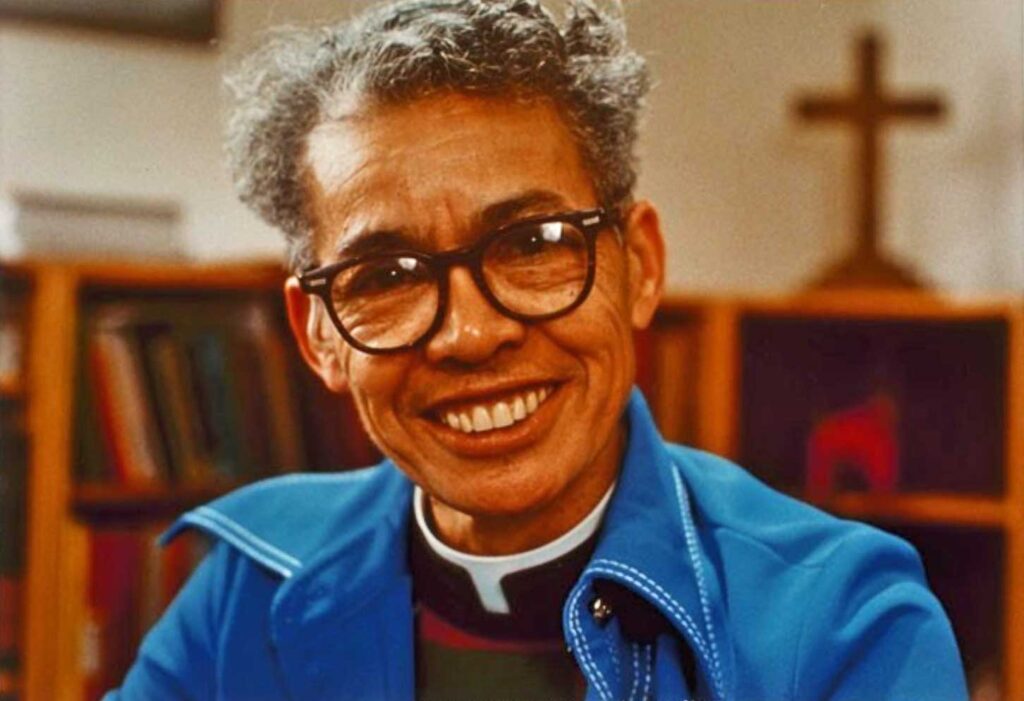
The website of The National Women’s History Museum (NWHM) describes Betty Friedan as “co-founder of the National Organization for Women” (NOW) and “one of the early leaders of the women’s rights movement of the 1960s and 1970s. Her 1963 best-selling book, The Feminine Mystique, gave voice to millions of American women’s frustrations with their limited gender roles and helped spark widespread public activism for gender equality.”
The 1964 Civil Rights Act had banned sex discrimination in employment, yet the Equal Employment Opportunity Commission, the government agency that had been established to enforce workplace equality, did not acknowledge the sex-discrimination clause, effectively nullifying the Civil Rights Act’s addition of gender.
As NWHM details, Freidan’s groundbreaking book “helped transform public awareness” of such discrimination and propelled Friedan into the leadership of the nascent women’s liberation movement where she was often referred to as the “mother” of second wave feminism.
In 1966, Friedan, Pauli Murray and Aileen Hernandez co-founded the National Organization for Women (NOW). Friedan was NOW’s first president and authored NOW’s mission statement: “…to bring women into full participation in the mainstream of American society now, exercising all the privileges and responsibilities thereof in truly equal partnership with men.”

Among the objectives of NOW were “securing the enforcement of anti-discrimination law; gaining subsidized child care, abortion rights, and public-accommodations protections; and passing the Equal Rights Amendment. NOW was able to bring about changes large and small — to hiring policies, to credit-granting rules, to laws — that improved the lives of American women.”
NOW was itself a groundbreaking organization, which made Friedan’s purging of lesbians from that organization in 1970 — after calling lesbians the “lavender menace” in an interview with the New York Times magazine — significant on a myriad of levels. That action effectively separated lesbians from mainstream feminism, just as they had been separated by gender from the decidedly male gay liberation movement.
NOW’s Susan Brownmiller, whose book “Against Our Will: Men, Women and Rape” would become another critically important feminist treatise, tried to make a joke of Friedan’s comment by calling it a “lavender herring,” but that just further alienated lesbians in the organization.
Mainstream media had already dismissed the feminist movement as “a bunch of bra-burning lesbians,” so Friedan and other straight feminist leaders were acutely sensitive to this labeling — and dismissal — of all feminists as lesbians. Friedan wanted “feminine feminists” in the movement.
Friedan, like many straight feminists, did not want feminism associated with and tainted by “man hating” and lesbianism. As lesbian activist Karla Jay later wrote in her memoir, “Tales of the Lavender Menace: A Memoir of Liberation,” “I’m tired of being in the closet because of the women’s movement.”
The blatant hostility toward lesbians and the move by Friedan and others to disassociate the feminist movement from lesbianism took on its own activism. NOW established policies that were exclusionary of lesbians in the early years of the organization. NOW newsletter editor Rita Mae Brown stated that “lesbianism is the one word which gives the New York NOW Executive Committee a collective heart attack.”
The lesbian purge at NOW was momentous and had a ripple effect for lesbian activists. It was also surprising and even ironic as lesbians had been so pivotal in the founding of NOW and in the impact and influence of second wave feminism. Many of the key figures of that wave of feminism and of NOW itself were lesbians. This included NOW co-founder Pauli Murray; then-lesbian theorist Rita Mae Brown, member of The Furies collective and author of the first mainstream lesbian novel, “Rubyfruit Jungle” and editor of the NOW newsletter; and graphic designer Ivy Bottini, who designed NOW’s logo (still used today) and was president of the largest chapter of the organization, New York NOW.
Yet the taint of the “lavender menace” was perceived by Friedan and other straight feminists, Shirley Chisholm and Gloria Steinem among them, to be problematic: lesbians were perceived as “man hating” and mainstream feminism was intent on presenting the movement as pro-woman, not anti-male. Lesbians were still viewed as perverts and even as mentally ill. It would be several more years before the psychiatric community’s DSM would change its view that homosexuality was a mental disease.
As Hannah Quayle wrote in a blog post about the purge, “Lesbians were placed within an unnatural category of the ‘third sex.’ This ‘third sex’ was associated as a gross abnormality which violated female anatomy, heterosexual desire and gender behaviour by associating masculine features upon the female body. In this sense, lesbians were not considered ‘real women,’ and stood outside the category of ‘woman’ in a physical, sexual, personal and political sense.”
Quayle asserted that within the mainstream feminist movement and NOW, “Lesbians had to find an effective way to address the accusation that their masculinity was somehow complicit with men and the patriarchy, and that lesbian influence would not in fact dismantle strict heterosexual categories as it was widely believed. Heterosexual feminists excluded lesbians from the feminist movement in the 1960s based on this discomfort towards their sexuality.”
In 1969, the same year as the Stonewall riots, president of the New York chapter of NOW Bottini broached the subject of lesbianism and the movement in a public forum titled “Is Lesbianism a Feminist Issue?” Bottini — like Brown, Murray and others — thought lesbians were leaders of the feminist movement, not background players. It was lesbians like Susan B. Anthony, who had also led the first wave of feminism in the U.S.
But Friedan was adamant that lesbians not derail the feminist movement and the work that she and others were doing to establish equity in employment and reproductive rights (Friedan was also co-founder of NARAL). Lesbian visibility, Friedan believed, would allow men to dismiss the feminist movement as fringe and something most women didn’t want to be associated with. Trumpeting her assertions and coining the term “lavender menace” (which a group of New York lesbians would later adopt to form a group of radical activists), NOW president Friedan fired openly lesbian newsletter editor Rita Mae Brown.
Friedan then orchestrated the purge of lesbians, including Bottini, from NOW’s New York chapter. That action did not go unremarked. At the 1970 Congress to Unite Women, 400 feminists from NOW and elsewhere were in attendance. Brown, Bottini, Karla Jay and a dozen other lesbian feminists marched to the front of the auditorium wearing T-shirts that read “Lavender Menace.”
One of the women, Charlotte Bunch, who was also a member of The Furies collective with Brown, read the Lavender Menace’s manifesto, “The Woman-Identified Woman.” That paper was considered the first major lesbian feminist statement. That action was among the first to challenge the heterosexism of heterosexual feminists and to present lesbians not as that “lavender menace” or mentally ill perverts, like the DSM defined them, but rather as more feminist than anyone, because they were women independent from and unconnected to men and to compulsory heterosexuality.
In the treatise, the “woman-identified woman” defined herself without reference to male-dominated societal structures. She “gained her sense of identity not from the men she related to, but from her internal sense of self and from ideals of nurturing, community, and cooperation that she defined as female.”
Later Bunch would write, “It is the primacy of women relating to women, of women creating a new consciousness of and with each other, which is at the heart of women’s liberation, and the basis for the cultural revolution,” articulating the principle of the woman-identified woman that would become a cornerstone of lesbian activism in the 1970s in the post-purge feminist movement.
Friedan’s action did not end with that Lavender Menace demonstration at the Congress to Unite Women. Pushback from within NOW’s ranks resulted in a near-embrace of lesbians within NOW just two years post-purge. In 1971, NOW passed a resolution declaring “that a woman’s right to her own person includes the right to define and express her own sexuality and to choose her own lifestyle [sic].” There was also a conference resolution about lesbian mothers that declared it was “unjust” to force lesbians to remain in heterosexual marriages or remain closeted to keep custody of their children.
The NOW Task Force on Sexuality and Lesbianism was established in 1973 and NOW resolved to introduce and support civil rights legislation designed to end discrimination based on sexual orientation. Del Martin was the first open lesbian elected to NOW, and Del Martin and Phyllis Lyon were the first lesbian couple to join NOW. Martin and Lyon were co-founders of Daughters of Bilitis, the first lesbian civil rights organization in the U.S.
Over the next 20 years, NOW would go on to support lesbian fights for everything from those custody battles to same-sex marriage and lesbians in the military. NOW supported the right of a lesbian co-parent to seek visitation by filing an amicus brief in the Pennsylvania Supreme Court case T.B. v. L.R.M. That right was upheld “where the child has established strong psychological bonds, with a person who … has … provided care, nurture, and affection, assuming in the child’s eye a stature like that of a parent.”
NOW also supported hate crimes legislation that included lesbians and trans women as early as 2002 and came out in support of the Matthew Shepard and James Byrd, Jr. Hate Crimes Prevention Act, which expands the 1969 federal hate crimes law to include sexual orientation, gender, gender identity and disability.
It all started with a purge. The history of that purge made history — and redefined the feminist movement.
